This website uses cookies so that we can provide you with the best user experience possible. Cookie information is stored in your browser and performs functions such as recognising you when you return to our website and helping our team to understand which sections of the website you find most interesting and useful.
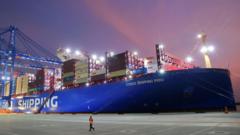
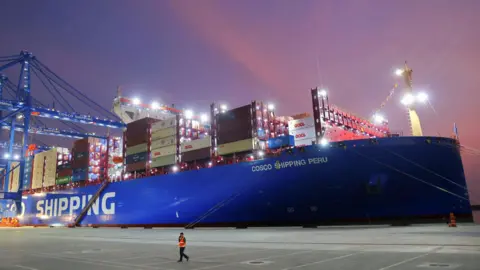 Reuters
ReutersAs the world waits to see how the return of Donald Trump will reshape relations between Washington and Beijing, China has just taken decisive action to entrench its position in Latin America.
Trump won the US presidential election on a platform that promised tariffs as high as 60% on Chinese-made goods. Further south, though, a new China-backed megaport has the potential to create whole new trade routes that will bypass North America entirely.
President Xi Jinping himself attended the inauguration of the Chancay port on the Peruvian coast this week, an indication of just how seriously China takes the development.
Xi was in Peru for the annual meeting of the Asia-Pacific Economic Co-operation Forum (Apec). But all eyes were on Chancay and what it says about China's growing assertiveness in a region that the US has traditionally seen as its sphere of influence.
As seasoned observers see it, Washington is now paying the price for years of indifference towards its neighbours and their needs.
"The US has been absent from Latin America for so long, and China has moved in so rapidly, that things have really reconfigured in the past decade," says Monica de Bolle, senior fellow at the Peterson Institute for International Economics in Washington.
"You have got the backyard of America engaging directly with China," she tells the BBC. "That's going to be problematic."
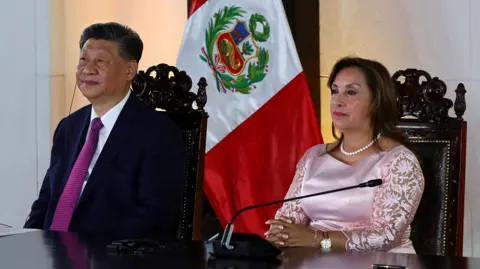 Reuters
ReutersEven before it opened, the $3.5bn (£2.75bn) project, masterminded by China's state-owned Cosco Shipping, had already turned a once-sleepy Peruvian fishing town into a logistical powerhouse set to transform the country's economy.
China's official Communist Party newspaper, the People's Daily, called it "a vindication of China-Peru win-win co-operation".
Peru's President Dina Boluarte was similarly enthusiastic, describing the megaport as a "nerve centre" that would provide "a point of connection to access the gigantic Asian market".
But the implications go far beyond the fortunes of one small Andean nation. Once Chancay is fully up and running, goods from Chile, Ecuador, Colombia and even Brazil are expected to pass through it on their way to Shanghai and other Asian ports.
China already has considerable appetite for the region's exports, including Brazilian soybeans and Chilean copper. Now this new port will be able to handle larger ships, as well as cutting shipping times from 35 to 23 days.
However, the new port will favour imports as well as exports. As signs grow that an influx of cheap Chinese goods bought online may be undermining domestic industry, Chile and Brazil have scrapped tax exemptions for individual customers on low-value foreign purchases.
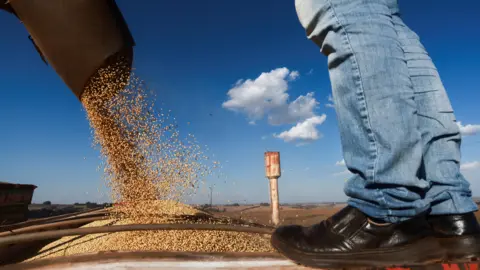 Reuters
ReutersAs nervous US military hawks have pointed out, if Chancay can accommodate ultra-large container vessels, it can also handle Chinese warships.
The most strident warnings have come from Gen Laura Richardson, who has just retired as chief of US Southern Command, which covers Latin America and the Caribbean.
She has accused China of "playing the ‘long game’ with its development of dual-use sites and facilities throughout the region", adding that those sites could serve as "points of future multi-domain access for the [People's Liberation Army] and strategic naval chokepoints".
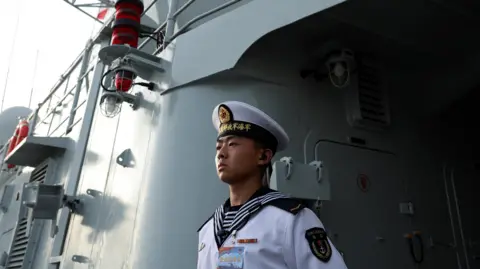 Reuters
ReutersEven if that prospect never materialises, there is a strong perception that the US is losing ground in Latin America as China forges ahead with its Belt and Road Initiative (BRI).
Outgoing US President Joe Biden was among the leaders at the Apec summit, on his first and last visit to South America during his four-year term. Media commentators remarked that he cut a diminished figure next to China's Xi.
Prof Álvaro Méndez, director of the Global South Unit at the London School of Economics, points out that while the US was taking Latin America for granted, Xi was visiting the region regularly and cultivating good relations.
"The bar has been set so low by the US that China only has to be a little bit better to get through the door," he says.
Of course, Latin America is not the only part of the world targeted by the BRI. Since 2023, China's unprecedented infrastructure splurge has pumped money into nearly 150 countries worldwide.
The results have not always been beneficial, with many projects left unfinished, while many developing countries that signed up for Beijing's largesse have found themselves burdened with debt as a result.
Even so, left-wing and right-wing governments alike have cast aside their initial suspicions of China, because "their interests are aligned" with those of Beijing, says the Peterson Institute's Ms de Bolle: "They have lowered their guard out of sheer necessity."
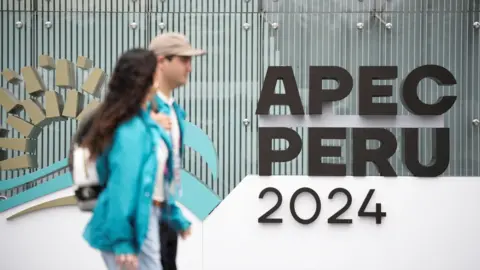 Reuters
ReutersMs de Bolle says the US is right to feel threatened by this turn of events, since Beijing has now established "a very strong foothold" in the region at a time when president-elect Trump wants to "rein in" China.
"I think we will finally start to see the US putting pressure on Latin America because of China," she says, adding that most countries want to stay on the right side of both big powers.
"The region doesn't have to choose unless it's put in a position where they are forced to, and that would be very dumb."
Looking ahead, South American countries such as Peru, Chile and Colombia would be vulnerable to pressure because of the bilateral free trade agreements they have with the US, which Trump could seek to renegotiate or even tear up.
They will be watching keenly to see what happens to the United States-Mexico-Canada Agreement (USMCA), which is up for review in July 2026, but will be subject to negotiations during 2025.
Whatever happens, Prof Méndez of the LSE feels that the region needs more co-operation.
"It shouldn't be that all roads lead to Beijing or to Washington. Latin America has to find a more strategic way, it needs a coherent regional strategy," he says, pointing to the difficulty of getting 33 countries to agree a joint approach.
Eric Farnsworth, vice-president at the Washington-based Council of the Americas, feels that there is still much goodwill towards the US in Latin America, but the region's "massive needs" are not being met by its northern neighbour.
"The US needs to up its game in the region, because people would choose it if there was a meaningful alternative to China," he tells the BBC.
Unlike many others, he sees some rays of hope from the incoming Trump administration, especially with the appointment of Marco Rubio as secretary of state.
"Rubio has a real sense of a need to engage economically with the Western Hemisphere in a way that we just haven't done for a number of years," he says.
But for successive US leaders, Latin America has been seen primarily in terms of illegal migration and illegal drugs. And with Trump fixated on plans to deport record numbers of immigrants, there is little indication that the US will change tack any time soon.
Like the rest of the world, Latin America is bracing itself for a bumpy four years - and if the US and China start a full-blown trade war, the region stands to get caught in the crossfire.



 Africana55 Radio
Africana55 Radio 

